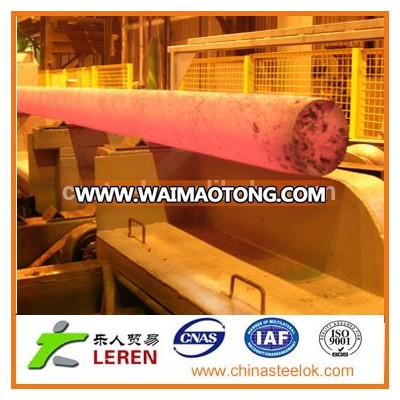

Heat Treatment Definition
Heat Treatment can be defined as a combination of heating and cooling operations applied to metals and alloys in the solid state to obtain desired conditions or properties. The Heat Treatment of metals involves raising the temperature of a steel or alloy, often through a prescribed thermal profile to a defined temperature.
The material is then held at temperature for a period of time before being cooled usually at a carefully controlled rate or in a quench process to a fixed temperature or to ambient temperature. Treatments are carried out in furnaces and ovens where gases are often used to control the atmosphere of the process. Controlled atmospheres are used to reduce the effects of oxidization on the component being treated or to provide an enriching atmosphere for surface chemistry effects.
Heat treatments can be employed to homogenize cast metal alloys or to improve their hot workability, to soften metals prior to, and during hot and cold processing operations, or to alter their microstructure in such a way as to achieve the desired mechanical properties.
Thermal treatments of metallic alloys are also employed to alter the surface chemistry of a material. This is achieved by diffusing Carbon, Nitrogen and other gaseous or solid material in to the surface of the component. These processes are used to give defined surface hardness and to improve wear, corrosion and fatigue resistance. Thermal Treatments can be classified by their purpose Heat Treatments, which modify the microstructure of the material or change the phase structure to improve the mechanical properties for specific applications or further work processes.


Annealing
A term used to describe a variety of softening heat treatments by changing the microstructure of an alloy.
Used mainly to remove stresses, to alter ductility, to induce softness or to produce amongst other things a defined crystalline grain structure. Various degrees of annealing occur by slow cooling an alloy, which has been heated to temperatures between 0.3 and 0.5 of its melt temperature.
Stress Relieving
A process used to remove stresses in welded, rapidly cooled components or cold work products. Relief is achieved by heat treating the component at a temperature for a period of time and then slowly cooling the product back to room temperature. The time and temperature are alloy dependent.
Normalizing
A treatment used to remove undesired microstructure effects of previous heat treatments and performed to produce a uniform grain structure.
Hardening
One of a number of processes used to improve the hardness of an alloy superior to that normally present in the core stock. Usually achieved by quenching material from above its upper critical temperature.
Solution Heat Treatment
A process in which certain alloys mainly some stainless steels and copper based alloys are heated to a suitable temperature to allow the constituents to enter into solid solution. The process is then held at the defined temperature for a specified length of time dependent on the alloy mix to allow the various components to form a coherent solid but soluble mass before rapid cooling
(precipitation) The material is then said to be in a supersaturated, unstable state, and may subsequently exhibit age hardening.
Quench hardening
The objective of this treatment is to produce a fully Martenstic micro-structure in the steel.
To achieve this the steel must be cooled rapidly from the austenitic condition.
The process is suitable for ferrous metal and alloys in which steel and cast iron alloys are heated above a certain critical temperature and rapidly cooled to produce a hardened structure. Either surface hardening or full-hardening can result, depending on the cooling rate. The process requires close control of temperature during heating and quenching.
One draw back from the fast cooling rate required to produce Martensite is that the outer surface is cooled more quickly than the core and thin/thick sections respond at different rates. This may
result in distortion or cracking of the component. When the quenching rate is insufficient or the section size is too large or the steel had insufficient hardenability Bainite is formed instead of Martensite.
Whether Bainite or Matensite is formed during the quench process the material is usually tempered before use.In the case of Bainite the process is usually used to reduce internal
stresses whereas in Matensite it is to improve ductility and toughness at the expense of strength and hardness.
Tempering
A treatment used to remove brittleness from mainly quench hardened steels and achieved by thoroughly soaking the material at an alloy dependent temperature prior to cooling.
Also referred to as the Draw process.
Case Hardening
One of a number of heat treatment processes which improve the surface hardness of a steel alloy without affecting the properties of the core material.
